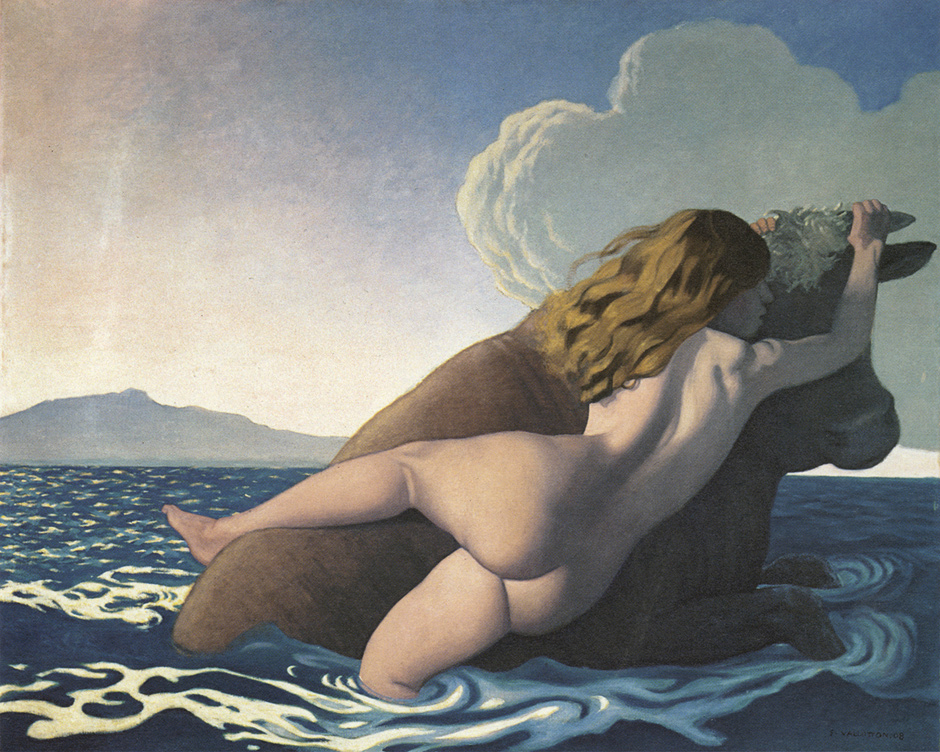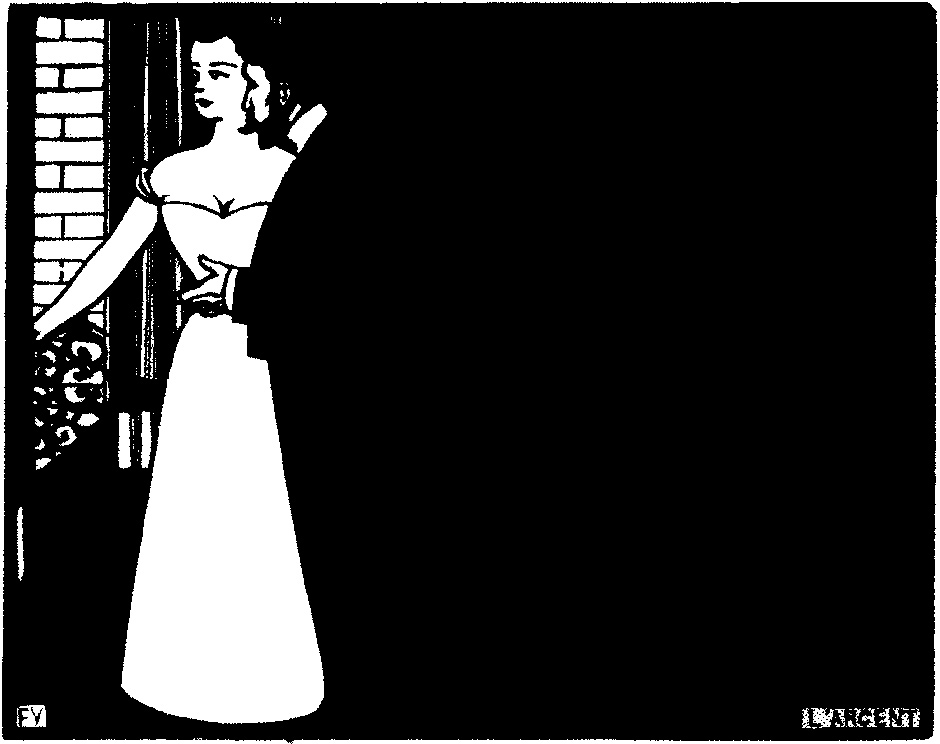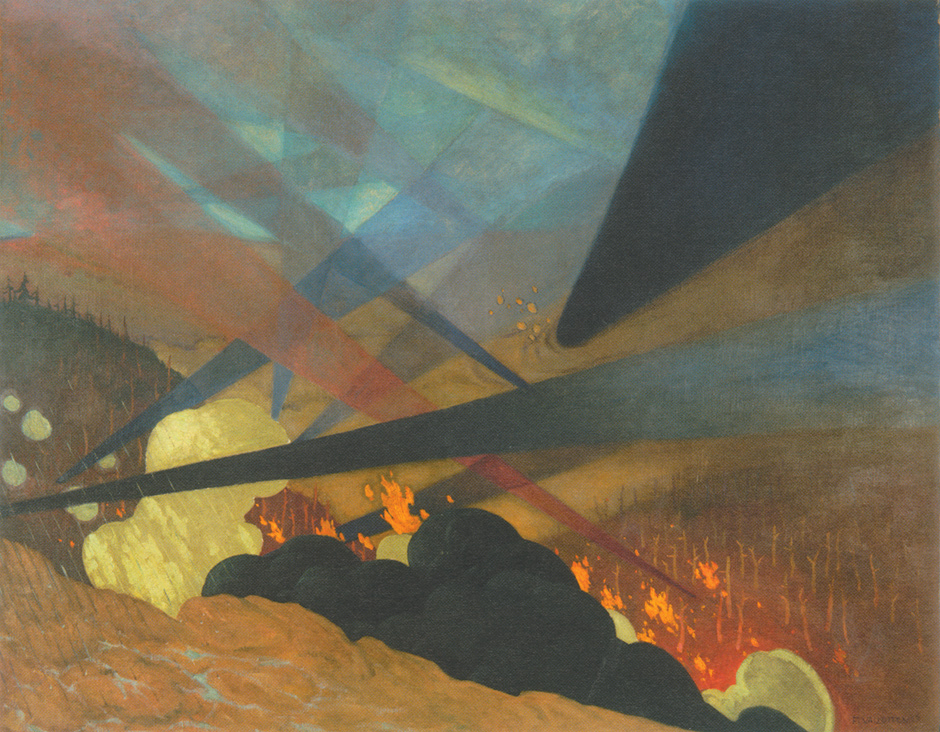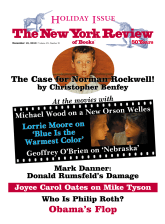Félix Vallotton is best known for the pungent wit of the woodcuts he executed in Paris in the 1890s—images that often appear in these pages. Later, he gained a certain notoriety for the tart and confrontational canvases he exhibited in that city’s annual Salons. Born in Lausanne, he died in a French cancer clinic in 1925, aged sixty. “The very singular Vallotton,”1 as he was hailed by his patron Thadée Natanson, was highly productive. Besides his two hundred or more woodcuts, the catalogue raisonné of his paintings lists 1,702 items, ranging through all the traditional genres—portraits, nudes, landscapes, urban scenes, history paintings, and still lifes; the artist also wrote reviews, essays, novels, and plays. Yet despite his ability and good connections, this Swiss friend of Vuillard’s was habitually regarded in Paris as le nabi étranger2, a perplexing and anomalous player in the art politics of his day. The Grand Palais is currently presenting his work afresh in a large-scale, thematically organized exhibition.
Not much, it would seem, has changed. As I walked through the ten galleries, gasps, mutterings, and shakings of the head were all around me, and indeed I found myself participating in the shock waves. There are, in fact, various modes in which Vallotton reaches out to disarm the viewer—his woodcuts and his landscapes can be delectable—but the curators have not structured their exhibition so as to foreground them. Instead, fidelity to their subject compels them to jar your sensibilities with canvases of rasping asperity from the moment you enter. Let me try to imitate their courage, by plunging straight into one of the coldest of Vallotton’s cold baths.
The Rape of Europa, a canvas roughly five feet wide, was exhibited in the Salon d’Automne of 1908. When this annual showcase for progressive art had been inaugurated five years earlier, Vallotton was on the board, so he was assured of a place on its walls. In 1907 he had put forward a portrait of Gertrude Stein meant, it seems, as a riposte to the archaicized portrait painted by Picasso the previous year and now to be seen in the Met. Let me show you how it should be done—by looking toward Ingres: so the forty-one-year-old reproached the young contender, devising a forcefully compressed image of the American writer that Vuillard promptly dubbed Madame Bertin. Come 1909, Vallotton would give the Salon d’Automne Hatred, an allegory obeying the same master in the cleanliness of its two nude figures’ outlines, except that she with her Gibson Girl hairstyle, clenching her fist at her mustachioed counterpart, was meant to herald the feminist ruination fast approaching twentieth-century mankind.
But in 1908, Vallotton presented the hanging committee with a return to a classical myth formerly beloved of palace decorators. To his dismay, he found that they placed his grande machine opposite the same-sized Dessert: Harmony in Red (now in the Hermitage), in which Henri Matisse had subsumed a dinner table, a maid, and a window into a sumptuous continuity of color and pattern. Louis Vauxcelles, the critic from Gil Blas, hailed the pairing as “a conversation of David with Cézanne.” But Vallotton did not share Vauxcelles’s respect for Matisse. He was amazed, he later muttered in his journal, at the reputation acquired by “this nothing,” whose art was a “best forgotten bad job, a few pretty tones blundering uncertainly about, no sense of style, no form whatever.”3 You may deduce that the man we are dealing with was, in his mature years, an aesthetic as well as a sexual reactionary.
Circumstantial politics aside, it is the texture of Vallotton’s actual painting that offends. Another critic, reporting on the Salon for a German art journal, characterized it ringingly:
The naked Europa is not made of flesh, the sea not made of water, the sky not made of air: rather, all is earth, burnt earth, lifeless, cold and heavy….4
The negatives here are irrefutable: I could add that the flowing hair of Vallotton’s model has been transmuted into a dense, static, impermeable mass without any savor of the organic. It meets the model’s skin at a hard edge, like matching cuts of laminate on drab office furniture. Likewise, her right leg simply stops at the knee, where an alternative mass of blue paint begins—nominally aquatic, but no less solid and no less dry. Such conjunctions happen again and again in Vallotton’s painting. During his early forties he seems to have hired as many women as possible to stand naked in his studio. Physique by physique, he would scrutinize what interested him—head, breasts, belly, hips: why bother with the tapering limbs below, if they strained the proportions of a standard-issue canvas? A brusque executive decision, therefore, lopped off the lower legs and cast the sex object as a part-submerged “bather” in a perfunctory marine scenario.
Advertisement
I might quibble with the German critic’s invocation of “burnt earth.” The hues my eyes butt against, whenever Vallotton is modeling flesh or drapery, are an ashen purply gray and something more acid, on a cusp between black and cyan blue. Returned from the Grand Palais to my writing desk, I still shudder at the memory of them, with its smack of the morgue. It is not easy, therefore, to account for my instinct that a taste for Vallotton is a taste worth cultivating, and that The Rape of Europa is a painting much to be admired.
I could begin, perhaps, at two ends of its female figure—the right arm, and that truncated right leg. The arm clinches Vallotton’s intrepretation of the classical myth. It blinds the bull, while clinging to him for dear life. The male drives, but equally the male is driven—desire for the female being the motor—and the ride for both female and male is desperate: toward the darkness they head. You might read the composition as a metaphor for a bad sex act, or more grimly, you might read it as a vision of the malignity of sex itself. But meanings, however weighty, can never fully justify a painting. Consider the twists of pale paint where that arm joins the girl’s back. They tell us, as do many such effects in Vallotton’s nudes, that an actual person was here in his studio in all her individual awkwardness, with her muscles tight-strapped to her shoulder blade in a manner that a beauty-worshiper such as Ingres would certainly have elided. Truth, here, is oddity—a doctrine underlined by the still more ungainly right thigh, a highlit fragment as flaccid as a deflating balloon.
But to make more sense of this and of the canvas’s other strangenesses, you need to read against the grain of the Grand Palais exhibition. In many ways the show serves its subject well, with a generous selection intelligibly grouped around genre and medium. The diversity of the performances that Vallotton delivers only emphasizes what a strong personal voice he has, whether portraying the Alps or the Loire, a brothel or a bomb blast, a belle époque grande dame or a 1920s flapper. At the least, whatever he signed off was clear-eyed and clear-headed: the buyer was nearly always offered a bold, resounding pictorial effect, dramatized by sharp tonal contrasts. Overall, it is as if you witnessed Vallotton offering a stiff-backed, highly personal salute to the passing parade of European high art. The themed presentation, however, tends to obscure the roots of his distinctiveness.
Reach for them, and you find Vallotton’s career beginning in a sort of primal horror. In 1885 the twenty-year-old, who had come from his Swiss bourgeois home to study at Paris’s Académie Julian, produced a startling dissociation as he stared at his mirror to paint his self-portrait. The hand that drives the brush seems to close in on Holbein, Vallotton’s patriotically chosen idol, in the confidence of its drawing: and yet the head thus delineated is wretched beyond redemption, from its eyes “without gleam, under sickly lids” to its “dregs of a tiny botched chin.”5 The paraphrases of the image come from La Vie meurtrière (The Murderous Life), Vallotton’s quasi-autobiographical novel about a clever young man whose presence spells doom to those around him, whose look seems to kill. In one episode, the protagonist accidentally tumbles a female model into a fire, after which one of her breasts is reduced to “a formless bloated mass, a sort of viscous magma.”6 The hideous image finds an echo in the show in a large-scale life study, again from art school days, of a middle-aged woman’s buttocks viewed at point-blank range.
With this ne plus ultra of materialist realism as his starting line, Vallotton moved forward by oscillation: via a push and pull, either staking out a distance from the object of depiction or frankly avowing his desire for it. He fell in with the taste for Japanese prints adopted by his new Nabi friends—Vuillard, Bonnard, et al.—while also developing a highly personal enthusiasm for the Douanier Rousseau. As the Gazette de Lausanne’s reporter in Paris, Vallotton expressed his thrill at the “disconcerting” conviction7 with which Rousseau painted whatever he wanted, and he followed suit with Bathers on a Summer Evening, a fantasy of available female bodies that almost falls about laughing at its own lubricity. The joke involves a cavalier playfulness with picture space indebted to Hiroshige and Kunisada, and it was their examples—the outrageous cropping, the shuttles between swooping recessions and framed rectangles—that emboldened Vallotton as he took to the woodcut, his most engaging means of expression, in 1891.
Advertisement
Others in Europe had been reviving the medium before him, but neither contemporaries such as Munch nor in fact the Japanese come close to the compact physical heft of Vallotton’s prints, with their slammed-down, fathomless slabs of black. (In the exhibition, you notice how the blocks dent the paper.) At the same time, a liberated lightheadedness reigns on the walls devoted to Vallotton’s dazzling seven-year run of graphic invention. His mind’s eye and his carver’s knife dart, zoom, and abbreviate. He devises chunky, black-and-white rhythms both for a glacier and for dust on the boulevards, for an elegant musical soirée and for a raucous music hall knees-up. The tight technical confines form an etiquette that allows Vallotton to be wickedly macabre, daring you to cackle at a bedroom stabbing or a suicide jumped in the Seine. He takes a pigeon’s-eye view of police thugs wielding their batons, or of a motley throng retreating pell-mell down a Paris street during a political demonstration—the desperate silhouettes of the stockbroker, the worker, the nanny, and the urchin all about to be sucked away into the mindless black sea of the masses. But there is no telling whether he cares for the causes of any.
He becomes a fly on the wall as behind closed doors, a bourgeois marriage or romance peels open to reveal its secret insincerities: the moment of a good-bye kiss before an assignation, or the point at which the sweet nothings get weighed against the zeros on the check. Again, in Intimités (1898), a series of ten woodcuts, Vallotton’s sympathies are suspended. Women deceive, but men long to be deceived. The two sexes are bound in complementary folly and if anything, it is the dumbness itself—the blackness—that wins out. The malice of this suite of graphic short stories is echoey and intricate, with only Vallotton’s countervailing editorial intelligence to render it savorable. The series was highly praised by Natanson, who published it in his Revue Blanche, and by Vallotton’s Nabi colleagues: not that Intimités comes that close in spirit to the intimism of Bonnard or Vuillard.
The suite took Vallotton’s exploration of the woodcut as far as it could go: the suspect lovers appearing in the block labeled L’Argent only occupy the left third of the image, the remainder constituting a night of ink as impenetrable as Tristram Shandy’s “black page” or as Malevich’s Black Square. It was time to return to his neglected oils. It was time, maybe, to have done with laconic reserve and to commit to the bourgeois home. In 1899, at the age of thirty-three, Vallotton shocked his bohemian friends by announcing his marriage to a widowed sister of the Bernheim brothers, the joint directors of a leading Paris gallery. This advantageous alliance hoisted him into a swanky apartment near the Bois de Boulogne and a villa on the Normandy coast: it also, for that matter, seems to have allowed for some affection, at least to judge by a rear view of his wife peering into a cupboard in her blue nightdress, one of the exhibition’s rare moments of tenderness.
Distance, however, was not to be abolished. Vallotton’s first and most haunting image of his new situation was of a lamplit family dinner table, across which the widow’s little daughter stares out suspiciously at an ominous foreground silhouette—that of the artist himself, this intruder who has placed a claim on her mother. Here (as in his novel, La Vie meurtrière) Vallotton is not so much an autobiographical artist as an artist who coolly and procedurally recognizes that his own emotional difficulties might supply him with viable imaginative material.
The picture is on cardboard, as were many of the era—with its retentive drag on the oil-loaded brush, a kind of halfway house for a printmaker longing to paint in an era prior to the invention of acrylics. For all his sure aim as an image-maker, Vallotton only gradually sidled his way back into the medium of oils on canvas, and when he did, as I have suggested, the palette could remain peculiarly rebarbative.
Nonetheless, nine years into his marriage, composing The Rape of Europa while working his way through every pair of breasts in the directory (the curators mention that at this stage, there were certain rancœurs domestiques8), Vallotton had developed a reasoned—if not necessarily an appealing—approach to the issue of depiction. His primary datum—and here he departs, for instance, from his onetime colleague Bonnard—is that the world is a collection of objects that exist independently of our seeing them. Objects, whether they be fruit or fruit trees or female bodies, are indefinitely various in appearance, since each has a separate history that causes it to pick up light in unique combinations of color and sheen. The painter must attend to this individuality, but he must interpret it through line, the register of intelligence—intelligence being what keeps Vallotton’s art afloat. There is to be no disguising the fact that a singular, transient object has been interpreted according to generic formal regularities. Painted flesh cannot be actual flesh, and painted hair cannot be hair.
There is to be no disguising, either, the conditions that separate the viewer from the object. The picture-maker can only observe things aspect by aspect, often obstructed or in random parallax conjunctions. He should acknowledge and analyze this partiality of vision. Equally, he should declare his interests, as a sex-driven voyeur: lay them on the table, submit them to intelligence. This is the doctrinal position that impelled Vallotton toward his harshest canvases: also, however, toward his most lyrical.
Whenever he switched from figures to landscape, Vallotton opened out to become a praise-singer. His methods could not have been less Impressionist, for his views of town or country all got reasoned out within the studio. Out in the open, face to face with the motif, he merely jotted down summary pencil lines with color notations: a tree here, a house there, this way a river, that way a hill. The world was a collection of such objects, and each required interpreting according to a certain standard morphology and surface rhythm. Vallotton thus arrived at a structured naiveté, as if the Douanier had been subcontracted to paint for Poussin. And by these means, he regularly reassembled sections of the world as he had encountered them, in all their luminous, liberating strangeness.
In particular, the prospect of water would liberate Vallotton from human tensions, whether he gazed at a twilit Lake Geneva, at the Loire from a sandbank, at a sunset over the Channel, or across the Neva in St. Petersburg. The last two canvases—1911 and 1913—suggest, with their radically minimal compositions, that the middle-aged enemy of the Fauvists had been keeping a beady eye on the way the modern art scene was now heading. (Indeed, appeals to myths such as Europa had been far from unfashionable circa 1908: Bonnard was painting fauns, Matisse a Nymph and Satyr, Picasso a Dryad.) Not long afterward, events offered Vallotton a cue to update his act far more decisively.
“War! The word is magnificent,” Vallotton declared in a 1917 essay. “The day I saw it appearing in big letters on the walls, I honestly believe I felt the strongest emotion of my life.”9 Magnificent, in that the blind forces governing the human brute, this lustful, deceitful object among objects, now stood starkly revealed. Yet how was a painter to address those fearsome energies set loose? The essay, informed by tours of the trenches, became an argument about the limits of depiction. When a shell explodes,
the objects affected fall back the moment after the shock into a new fixity. What was a house is no more than a shaking ruin, but on this ruin the sun plays and distributes its rays; the contours are altered, the materials differ, the surfaces and the angles are modified; a stone is there that wasn’t there before, a wall has disappeared, suddenly replaced by overtipped trees; the décor is transformed, but it is still and always a décor.10
To address this almighty theme of war, therefore, one must renounce appearances. “Perhaps the still embryonic theories of cubism might be fruitfully applied?”11 Verdun, the painted outcome of Vallotton’s argument, borrowed the geometry of interpenetrating rays favored by the young artists of the 1910s to give monumental, quasi- abstract form to France’s direst battle. It must have been hard to place in its own time, and it remains so now. It is hardly Guernica—a senior artist divining the great image for the contemporary crisis—and yet Vallotton made a formidable logic out of his newly adopted language, itself the logical endpoint of his rooted antihumanism.
Not much has changed, when we head for a Paris exhibition surveying some product of the belle époque. We still hope for pleasures couched in reason—such as those delivered by Matisse, who claimed in 1908 that figure-painting allowed him “to express the so-to-speak religious feeling I have about life.”12 But in the century since, far different notions of figuration have entrenched themselves: accounts that have grounded representational art in pessimism and stoic obduracy. Whether or not there was an actual genealogy of influence, Vallotton’s surest heir—another searing image-maker with a sour palette to deploy—remains Edward Hopper.
But much nearer to hand, we encounter paintings on all sides that undertake depiction while caught within a joyless bind—the options being deadpan distance, or else dumb and hungry gazing. Those options were thought through a long time ago, and what chiefly separates Vallotton from his legion of descendants is his fiercer discipline and—for all his provocations—his fitful capacity for lyricism. “Ouch! Embarrassing!” The passersby I encountered in the Grand Palais were like the twenty-year-old at the Académie Julian: it was the mirror at which they recoiled.
This Issue
December 19, 2013
Mike
An American Romantic
Gazing at Love
-
1
“Le Très Singulier Vallotton”: chapter heading in Thadée Natanson, Peints à leur tour (Paris: A. Michel, 1948), p. 307. All translations throughout the article are my own. ↩
-
2
The epithet runs through all the literature and seems to have originated among the Nabis themselves: I cannot trace its first citation. ↩
-
3
“Vu des Matisse chez George Bernheim. Je suis stupéfait de l’illusion créée autour de ce néant. Ce n’est ni fait ni à faire, quelques jolis tons errant au hasard dans l’incertain, aucun sens de l’écriture, aucune forme rien!”; Vallotton’s journal for June 7, 1920, in Félix Vallotton: Documents pour une biographie et pour l’histoire d’une œuvre, edited by Gilbert Guisan and Doris Jakubec (Lausanne: Bibliothèque des Arts), Vol. 3, pp. 272. ↩
-
4
“Die nackte Europa ist nicht von Fleisch, das Meer nicht aus Wasser, der Himmel nicht aus Luft, sondern alles ist Erde, gebrannte Erde, leblos, kalt und schwer…”; Karl Eugen Schmidt in Kunstchronik, October 30, 1908, p. 54, quoted in Marina Ducrey, Félix Vallotton, 1865–1925, L’Œuvre peint (Zurich: Institut suisse pour l’étude de l’art, 2005), Vol. 2, p. 403. ↩
-
5
“Un œil pâle, bien placé, mais sans éclat sous des paupières maladives…la fuite d’un tout petit menton raté”; Félix Vallotton, La Vie meurtrière (Paris: Trois Collines, 1946), p. 49. ↩
-
6
“De la douce fleur rose et des chairs si tendres ne subsistait qu’une masse informe et boursouflée, une sorte de magma visqueux”; La Vie meurtrière, p. 76. ↩
-
7
“Son tigre surprenant une proie est à voir: c’est l’alpha ou l’oméga de la peinture, et si déconcertant…”; Vallotton in the Gazette de Lausanne of March 25, 1891, in Félix Vallotton, 1865–1925: Critique d’art, edited by Rudolf Koella and Katia Poleti (Milan: 5 Continents, 2012), p. 32. ↩
-
8
The phrase is taken from a wall caption in the exhibition. ↩
-
9
“La guerre!… Le mot est magnifique…et le jour où je le vis surgir en caractères gras le long des murs, je crois bien avoir ressenti la plus forte émotion de ma vie”; Vallotton, “Art et Guerre,” in Félix Vallotton: Documents, Vol. 3, pp. 301–302. ↩
-
10
“Les objets atteints retombent à l’instant même qui suit le choc dans une nouvelle fixité. Ce qui était une maison n’est plus qu’une ruine branlante, mais sur cette ruine le soleil joue et distribue ses rayons; les modelés sont autres, la matière diffère, les surfaces et les angles sont modifiés; un caillou est là qui n’y était pas, un mur a disparu, soudain remplacé par un balancement d’arbres; le décor s’est transformé, mais c’est encore et toujours un décor.” Félix Vallotton: Documents, Vol. 3, p. 303. ↩
-
11
“Peut-être les théories encore embryonnaires du cubisme s’y pourront-elles appliquer avec fruit?” Félix Vallotton: Documents, Vol. 3, p. 306. ↩
-
12
“Ce qui m’intéresse le plus, ce n’est ni la nature morte, ni le paysage, c’est la figure. C’est elle qui me permet le mieux d’exprimer le sentiment pour ainsi dire religieux que je possède de la vie.” Henri Matisse, “Notes d’un peintre,” La Grande Revue, Vol. 12, No. 24 (December 25, 1908). ↩







